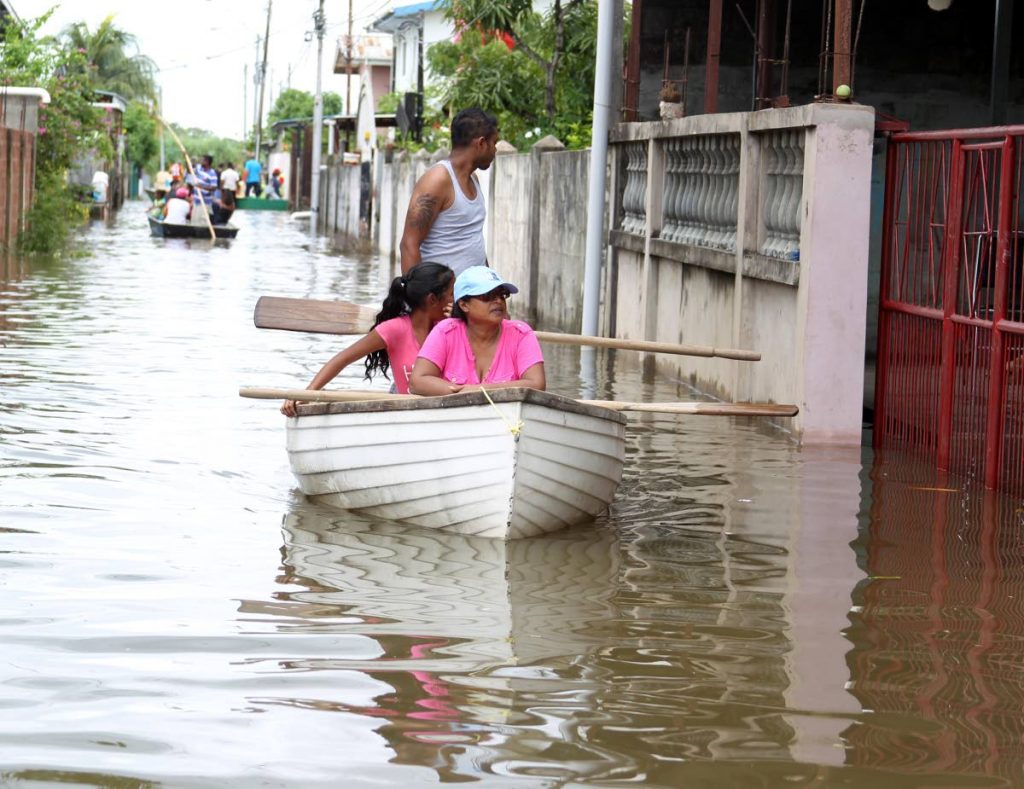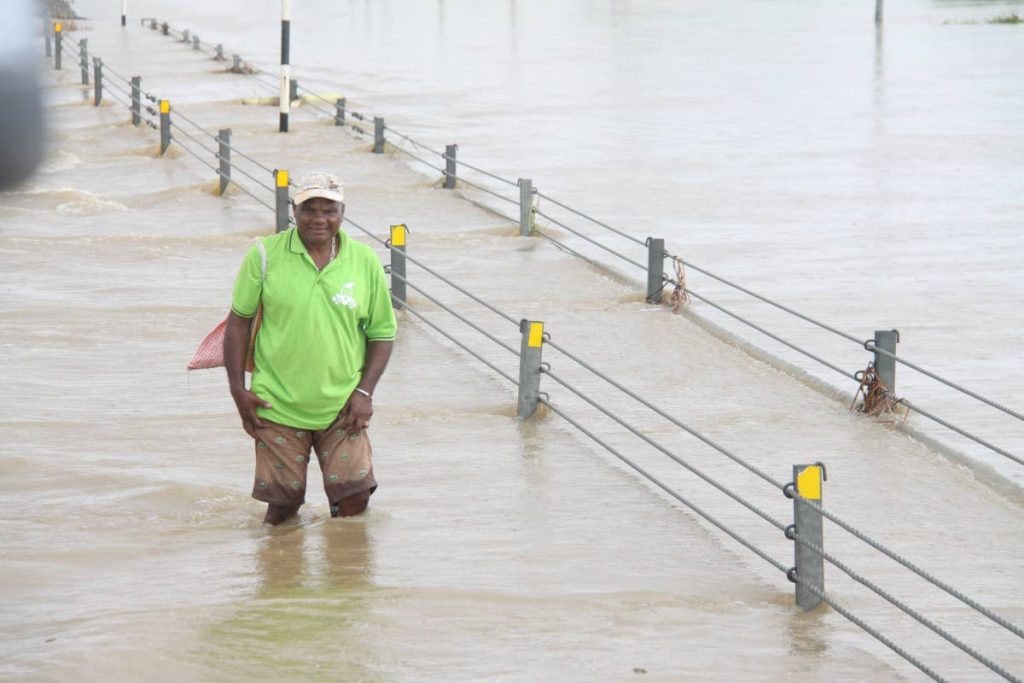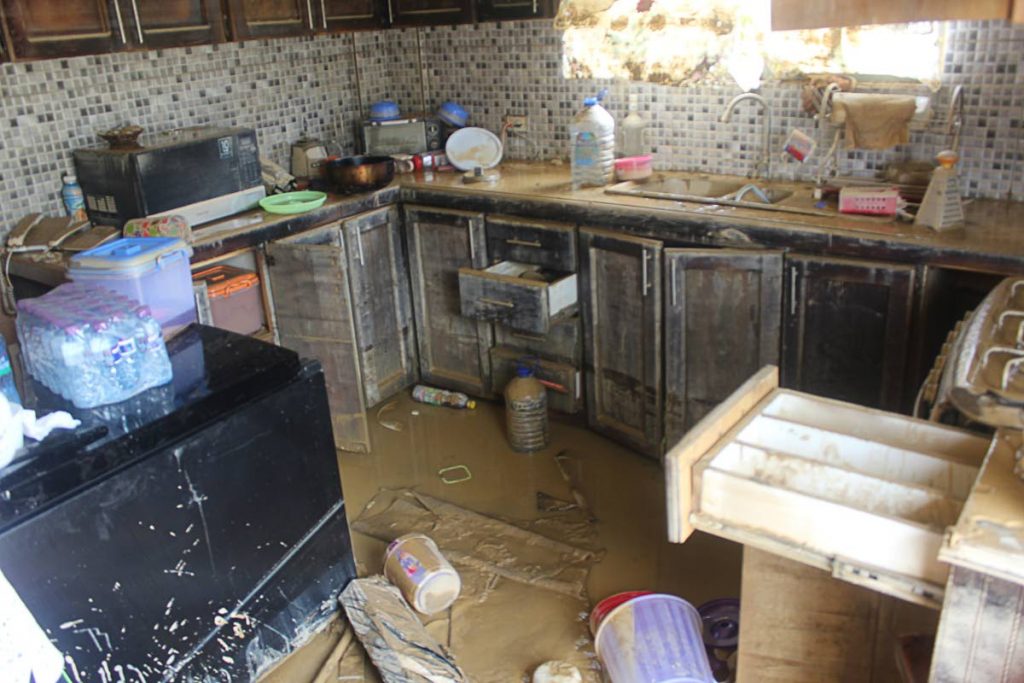Govt to upgrade drainage system

CATASTROPHIC flooding hit Greenvale, La Horquetta and several parts of Central Trinidad on October 19 with Prime Minister Dr Keith Rowley referring to it as a “national disaster.”
What if that disaster could be prevented from happening again? What will it take to do so? Sunday Newsday took a sail-along with Minister of Works and Transport Rohan Sinanan and some of the technocrats at the ministry through the Caroni River, which, after bursting its banks, flooded Central and the back up caused Greenvale to be flooded by water that reached up to ten feet high.
The voyage began around 2 pm beginning at the swamp near the Caroni Bird Sanctuary. From the sanctuary the vessel, an aluminium flat bottom boat manned by Coast Guard members, went along the Blue River and into the Gulf of Paria to meet the mouth of the 40 km Caroni River. In the middle of the ocean, facing Port of Spain, the depth of the water at some parts were as low as six feet. The tour stopped at the St Joseph River which had a depth of one foot at the time as a result of the low tide and silt. Rabindranath Jogie, Director of Mechanical Services at the ministry told the media that the Caroni River and adjoining tributaries, was in dire need of dredging and a higher river bank.

“There is a programme that was approved by the cabinet in the last fiscal year. The tenders for that was supposed to be out next week but we will have hold on that for now review the scope of works and restart the process. What we will do is hold the tender, review it and have a new one in about a month or two” Sinanan said.
Jogie added that the river should be be in the vicinity of 20 feet and following the three-day downpour that saw at least a month of rainfall according to meteorologist, the water rose about two feet before reaching and breaching its bank. The tour went through some of the tributaries leading into the Caroni River. These too are in need of dredging. Apart from that, squatters, many of them animal farmers, had breached the bank for their boats to berth at certain points, a phenomenon to Sinanan and the National Security members escorting the expedition.
“What we realised on the trip is that banks were breached in several areas some man-made and some because of the heavy downpour and a lot of it because of neglect for over last 15 years as the banks of the river had not been maintained as it should have been” Sinanan said.
He added that going forward that extensive work would have to be done to raise the banks and de-silt the Caroni River which at present is between eight to 16 feet deep but needed to be at least 20 feet deep. The banks also need to be raised a few feet higher to increase the capacity of water to flow into the Gulf of Paria. This exercise will have to be in tandem with clearing the tributaries leading into the Caroni River as well Sinanan said.

Hayden Phillip, the director of the Programme for Upgrading Roads Efficiency Unit (PURE), was also on yesterday’s tour but spoke with Sunday Newsday last Friday. Phillip said that apart from dredging, his hope was to cut an additional course for the Caroni River.
Phillip said: “Most of our flood plains have been filled up by developers. Most of the flood plains are gone and that is why after a few minutes of rain there is flooding on the PBR and those places. We have to cut new channels and break up the water instead of the water going to the Caroni river. This will give capacity and spread out water. Now is the time to start doing it before more lands get filled up. There are things that drainage have to do but this will come out in the national drainage study. We have to do something.”
That study he referred to was the Cabinet approved hydrological investigation announced at post-Cabinet media briefing by Rowley last Thursday. Rowley said that he instructed the Works Ministry to immediately conduct a hydrological investigation of affected areas, especially in south La Horquetta, that leads into Greenvale Park to “determine why Greenvale was so heavily impacted and to determine what if anything can be done in terms of physical works to interfere with the drainage system there to if not eliminate but to ameliorate and bring greater comfort to those persons who live in that area.”
Phillip added that currently the water courses that exist do not have the capacity for the volume of water that comes downhill, which in some areas have been left bare by developers, legal and illegal clearing the mountains.
His additional suggestion is is to have retention ponds upstream to trap the water and release it slowly. And downstream another retention pond is to be built to for the same reason.
Currently to alleviate flooding in Port of Spain, Phillip and his team are constructing a new drain near the lighthouse that will take some of the water from East Port of Spain to stop the floods at City Gate. He added that a retention pond is also to be built and a pump that can hurl 80,000 gallons of water per minute will also be used to assist is getting the water out to sea as quickly as possible.
A major hindrance in the work was a lack of knowledge by the various utility companies to properly map their underground lines.
He said while digging, they have encountered utility lines and when one is cleared, another, usually unknown to that utility company, is found. He said the work should be completed within six weeks, provided there were no more surprises.


Comments
"Govt to upgrade drainage system"